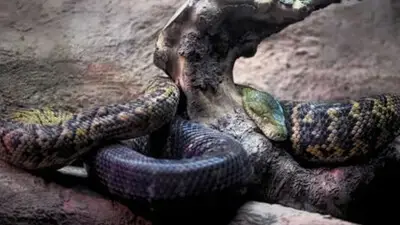Recommended Stories
Houston: NASA astronomers, while searching for rings around the dwarf planet Pluto, have discovered a tiny new moon around the planet, photos from the Hubble Space Telescope showed.
The moon, which has been temporarily named P4, was spotted in a Hubble survey searching for rings around Pluto.
The tiny satellite, the fourth and smallest one, is estimated to be between 13 to 34 kilometers wide.
For comparison, Pluto`s largest moon Charon is 1,043 km across. The dwarf planet`s other moons, Nix and Hydra, range between 32 to 113 km across.
"I find it remarkable that Hubble`s cameras enabled us to see such a tiny object so clearly from a distance of more than 5 billion km," Mark Showalter of the SETI Institute in Mountain View, Calif said in a statement.
Showalter led this observational survey with Hubble.
Pluto`s new moon is located between the orbits of Nix and Hydra, which Hubble also discovered in 2005.
Charon was discovered in 1978 at the US Naval Observatory and was first resolved using Hubble in 1990 as a separate body from Pluto.
The finding is a result of ongoing work to support NASA`s New Horizons mission, which is scheduled to fly through the Pluto system in 2015.
The mission is designed to provide new insights about worlds at the edge of our solar system.
Hubble`s photos of Pluto`s surface and the discovery of its satellites have been invaluable for planning for New Horizons` close encounter, scientists said.
"This is a fantastic discovery," said New Horizons` principal investigator Alan Stern of the Southwest Research Institute in Boulder, Colo.
"Now that we know there`s another moon in the Pluto system, we can plan close-up observations of it during our flyby."
The dwarf planet`s entire moon system is believed to have formed by a collision between Pluto and another planet-sized body early in the history of the solar system.
The galactic smashup flung material that combined into the family of satellites observed around Pluto.
P4 was first seen in a photo taken with Hubble`s Wide Field Camera 3 on June 28.
It was confirmed in subsequent Hubble pictures taken on July 3 and July 18.
The moon was not seen in earlier Hubble images because the exposure times were shorter.
There is a chance that P4 appeared as a very faint smudge in images from 2006, but was overlooked because it appeared obscured, scientists said.
Pluto is the only dwarf planet to once have been considered a major planet.
Once thought of as the ninth planet and the one most distant from the sun, Pluto is now seen as one of the largest known members of the Kuiper belt, a shadowy disk-like zone beyond the orbit of Neptune populated by a trillion or more comets.
Pluto was reclassified as a dwarf planet in 2006, a change widely thought of as a demotion that has attracted controversy and debate.
Pluto is the only dwarf planet to once have been considered a major planet.
Once thought of as the ninth planet and the one most distant from the sun, Pluto is now seen as one of the largest known members of the Kuiper belt, a shadowy disk-like zone beyond the orbit of Neptune populated by a trillion or more comets.
Pluto was reclassified as a dwarf planet in 2006, a change widely thought of as a demotion that has attracted controversy and debate.












